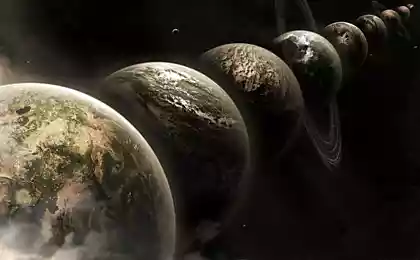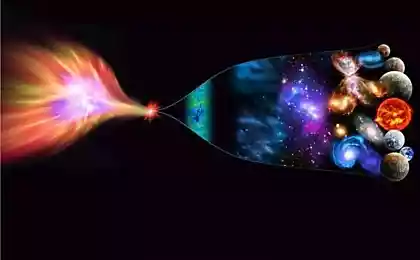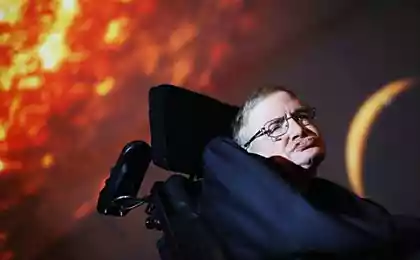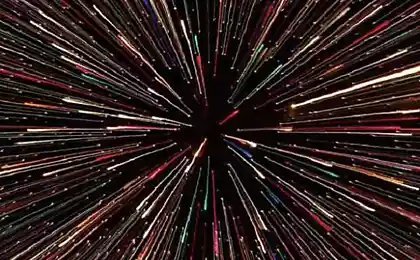441
How far back can we look?

The universe is a magical window of time that allows us to look into the past. The farther we look, the further back in time we see. Unlike our brains that tell us that things which we see exist in the moment, light travels at a speed of 300,000 kilometers per second, which leads to huge time delays in the distance.
Let's assume that you are talking with a friend who is a meter away from you. The light from the face of your friend reaches you for 3,336 nanoseconds. You almost always see their loved ones as they were 3,336 nanoseconds in the past. When you look around, you don't see the world as it is, you see the world as it was a split second ago. And the farther things are, the further in time we look.
The distance to the moon — an average of 384 000 kilometres. Need light 1.28 seconds to get from the moon to the Earth. If the moon is going to be a massive explosion secret Nazi base, you'll see him a little more than a second. Even an attempt to contact someone on the moon will cause disappointment, because in any dialogue there will be a delay.
Let's try to look at the bigger examples. Our Sun 8 minutes and 20 seconds the speed of light from us. You see the Sun as it was 8 minutes ago. Always. Mars, on average, is 14 light minutes from Earth. Any live stream of the Mars Rover "Curiosity" will not be "live". Scientists often speak of something like "14 minutes of terror", only after which can you really know whether it was successful landing of the Rover. The Rover communicates with us via radio signals, but since they move at the speed of light, the delay is present too.
When the next year, the spacecraft "New horizons" by NASA reaches Pluto, it will be 4.6 light years from us. If we had a strong enough telescope that could see the convergence of camera and the planet, we would see events that happened 4.6 hours ago.
The nearest star Proxima Centauri is 4.2 light years from us. This means that Proxima Centauri still don't know about the release of the iPhone 6 and the discovery of the Higgs boson, or that there will be a new episode of "Star wars". However, the release of the first iPhone Proxima-cantabrica know.
The eagle nebula the famous Pillars of creation is 7000 light years from us. Astronomers believe that in this region there was a supernova explosion, which swept the Pillars. We photograph them with telescopes, knowing that they do not exist already for thousands of years.
The core of our milky Way galaxy is 25 000 light years from us. When you look at beautiful pictures of the core of the milky Way, you see the light that was born in time of the first migration of people around the world.
About Andromeda you can do to temporarily forget. This galaxy is 2.5 million light years from us. The light we see left Andromeda, back when Homo erectus had not even conquered the Earth. There are galaxies where aliens might see dinosaurs on Earth with their powerful telescopes.
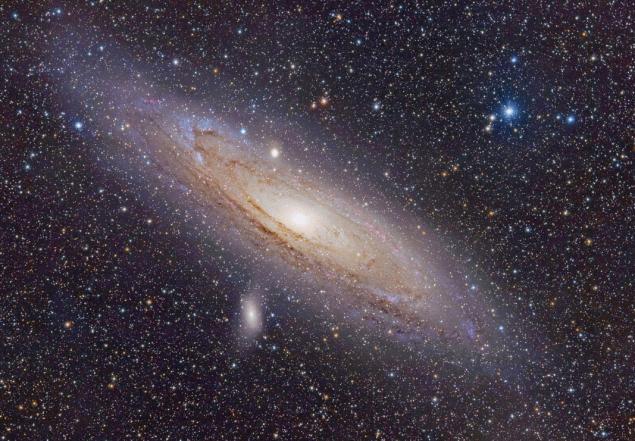
The Andromeda Galaxy
Here begins the most interesting. Some of the brightest objects in the sky represent quasars, actively feeding supermassive black holes in the centers of galaxies. The nearest one is 2.5 billion light years from us, but there is, further, there are many others. The earth was formed only 4.5 billion years ago, so we can see quasars that shone long before the Earth even formed.
The cosmic microwave background radiation, the boundary of the observable Universe is 13.8 billion light years from us. This light left the Universe when she was only a few hundred thousand years, and only now he got to us. What is even more strange, a place that gave off this light, is 46 billion light years from us. This distance is almost three times the length of the observable Universe.
Should thank the light for its limitation. Without a finite speed of light we would not know about the Universe so much. At what point in history would love to see you?
Here's another that leads to interesting thoughts: the Fermi paradox. Human civilization — just ripples on the cosmic ocean, the youth of the human mind is unprecedented. Our most powerful telescopes peering into deep space, trying to see at least some glimpses of civilizations. But the light of distant galaxies comes to us for millions of years, and if you simply admit that here at this very moment somewhere in a distant galaxy were a grain of reason, will take a very long time before we will be able to see its first fruits. And we will always see the Universe as it was in the past: there, over many millions and billions of kilometers can be a life far superior to us in all aspects of development.published
Source: hi-news.ru







